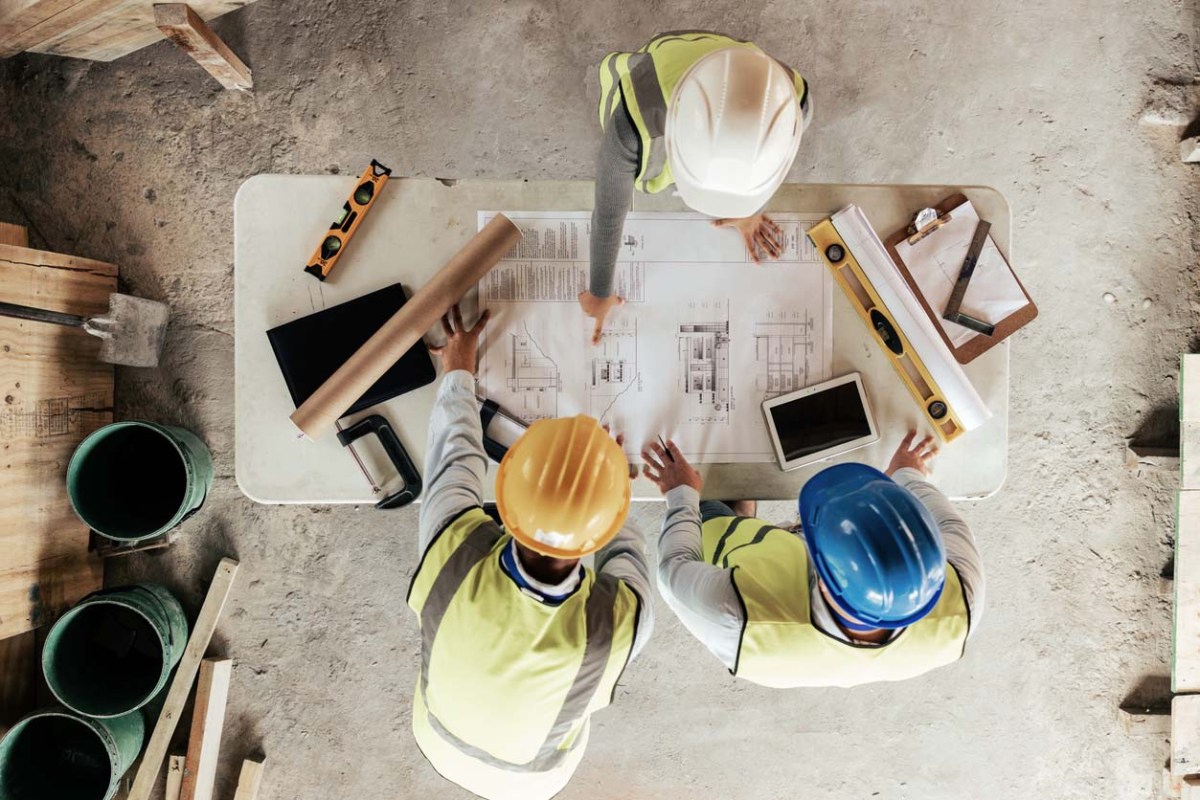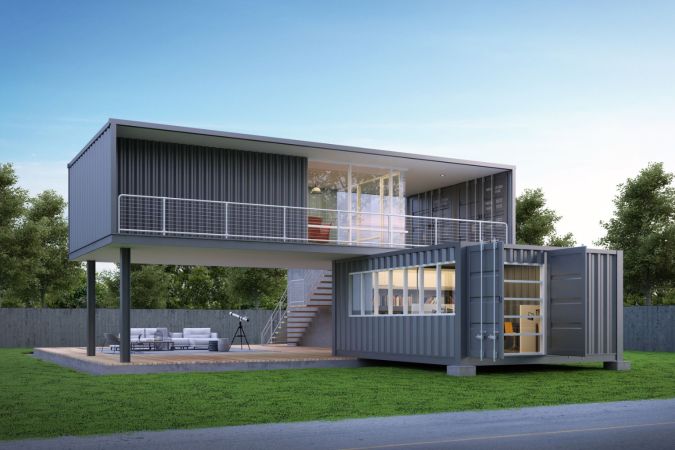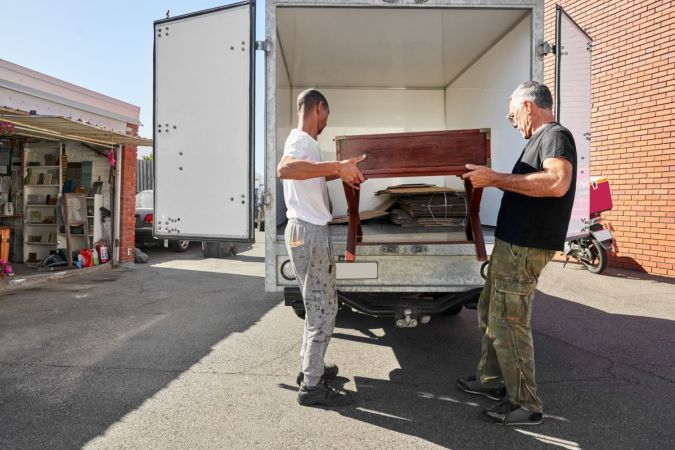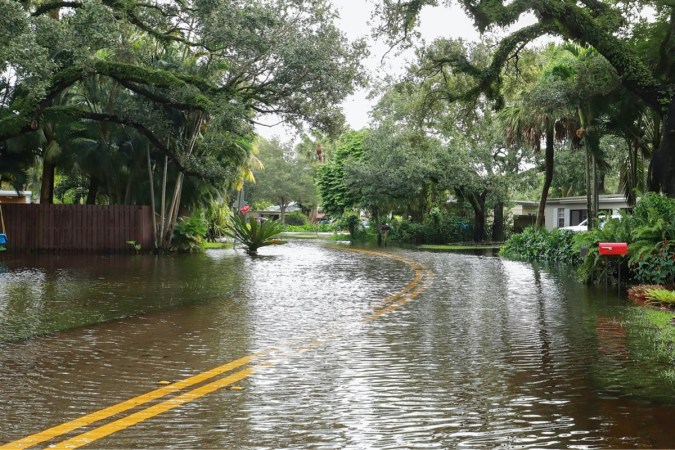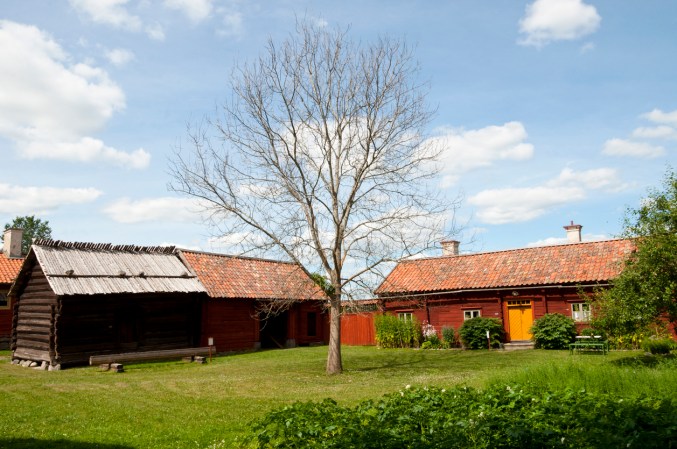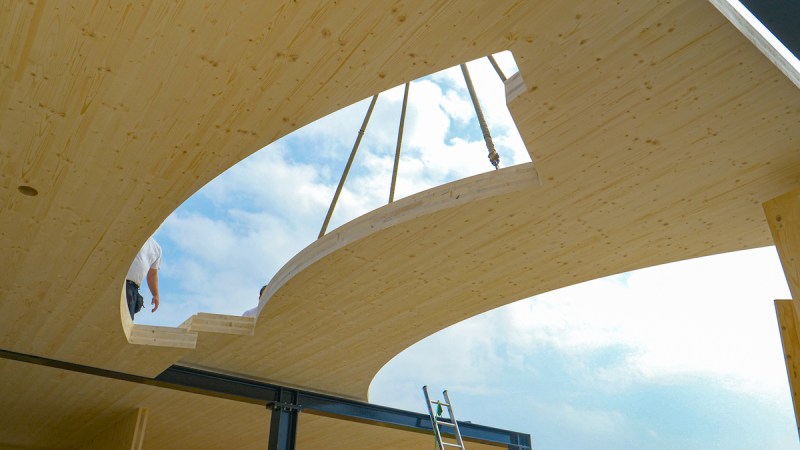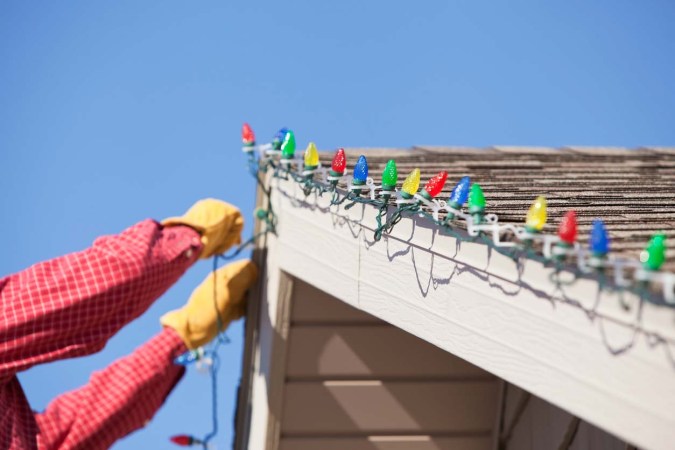We may earn revenue from the products available on this page and participate in affiliate programs. Learn More ›
Highlights
- Retrofitting a house for earthquakes typically costs between $3,369 and $8,608, with a national average cost of $5,988.
- The cost for an earthquake retrofit will depend on the size of the home, the type of foundation, the type of home, the retrofitting method used, the cost of labor and materials, and the home’s geographic location.
- Earthquake retrofitting is advisable for homeowners who live in areas with frequent seismic activity or close to active fault lines and for homes that were built in the 1980s or earlier.
- An earthquake retrofit is a project best left to a professional who has experience completing this type of project; this is especially important because many states require the retrofit to be performed by a certified installer.
Earthquakes, tremors, and other seismic activity can disrupt the position and stabilization of a home, causing it to slip off its foundation, buckle, or collapse. While there are many areas of the country that don’t experience a high frequency of seismic activity, homeowners who live near active fault lines, in what is colloquially referred to as earthquake country, will want to take steps to protect their home from future earthquake damage.
A seismic retrofit project is intended to help stabilize the home and minimize damage caused by earthquakes. According to Angi and HomeAdvisor, the cost of retrofitting a house for earthquake protection ranges from $3,369 to $8,608, with an average cost of about $5,988. Given the potential costs involved with making repairs to the foundation, fixing structural issues, or rebuilding a collapsed home, it may be worth it to invest in a retrofit foundation project.
Factors in Calculating Earthquake Retrofit Cost
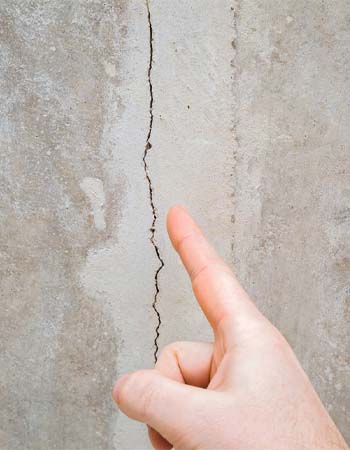
In addition to investing in one of the best earthquake kits, retrofitting the home for better seismic resistance is one of the best ways to prevent earthquake damage, though it’s important to understand the budgetary factors that can impact earthquake retrofit cost, including the home size, foundation type, and retrofit technique. Homeowners can learn more about earthquake retrofitting projects to determine if this upgrade is right for their home.
Home Size
Earthquake retrofits help to stabilize and secure the home, so the larger the structure, the more costly the retrofit project. Smaller homes that are about 1,000 square feet in size cost about $3,000 to $7,000 on average, while retrofit projects for houses that measure 2,500 square feet could cost as much as $7,500 to $17,500.
Professional earthquake retrofit upgrades will generally cost about $3 to $7 per square foot, including the cost for materials and labor. Without labor, costs would be as little as $1 to $3 per square foot.
| Home Size in Square Feet | Average Cost (Resources and Labor) |
| 1,000 | $3,000 to $7,000 |
| 1,200 | $3,600 to $8,400 |
| 1,500 | $4,500 to $10,500 |
| 2,000 | $6,000 to $14,000 |
| 2,500 | $7,500 to $17,500 |
Foundation Type
The type of foundation the home has can also impact the overall cost of the retrofit project. Typically, slab foundations are the least expensive to retrofit, at about $500 to $3,000, while the homeowner could spend up to $10,000 on average to retrofit a wood foundation. Similarly, post and pier as well as brick foundations may cost up to $10,000 on average.
Retrofitting basements and footing stem walls is more costly than working on a simple slab though not as expensive as upgrading a wood or brick foundation. Before starting this project, homeowners will want to inspect the home or speak to a knowledgeable professional to determine the type of house foundation.
| Foundation Type | Average Cost (Resources and Labor) |
| Basement | $3,000 to $5,000 |
| Brick | $2,000 to $10,000 |
| Footing Stem Wall | $3,000 to $7,000 |
| Post and Pier | $3,000 to $10,000 |
| Slab | $500 to $3,000 |
| Wood | $5,000 to $10,000 |
Home Type
Another factor to consider is the type of home. In terms of earthquake retrofit projects, most homes fit into one of four categories, including hillside homes, manufactured homes, mobile homes, and soft story homes.
- Hillside homes provide homeowners and residents with picturesque views, but the location of the home can increase the risk of earthquake damage. Retrofitting a hillside home typically costs about $5,000 to $10,000.
- Manufactured homes usually sit on a concrete slab for support, but if an earthquake hits, this may not be enough to stabilize the house. Homeowners may want to consider installing a new foundation for about $5,000 to $15,000 or even adding a full basement to the manufactured home for $50,000 to $150,000.
- Mobile homes may seem like a poor option for a retrofitting project, but there are actually several upgrades that can help protect a mobile home, including adding a primary support column for $3,000 to $9,000, installing tie-down straps for $2,000 to $5,000, and investing in a new slab foundation for about $5,000 and $25,000.
- Soft story homes have multiple stories and include a large opening where there would normally be a structural wall or shear wall. These homes are split into standard single-family buildings and full multi-unit buildings. Retrofitting a soft story in a standard, single-family home will generally cost between $10,000 and $80,000, while retrofitting a multi-unit building can cost as much as $80,000 to $350,000.
Retrofitting Method
The type of retrofitting that is conducted at the property can also influence the overall cost of the project and the success of the upgrade. Common options include anchoring the home to a mudsill, bracing the cripple wall, bolting the cripple wall, bolting the foundation, and reinforcing the shear wall.
However, there are other retrofitting options that may fall outside of these methods, including reinforcing (or strapping) the chimney, reinforcing the masonry walls, installing an emergency earthquake gas shut-off valve, and bracing the water heater. Homeowners will want to speak with an earthquake retrofit professional for specific advice on which retrofitting methods are best for their home.
Labor
It isn’t recommended for a DIYer to attempt to take on an earthquake retrofit project, so it’s important that they leave room in the budget for labor costs. Generally, the earthquake retrofit company will send an individual or team to the home for an initial assessment, which costs about $100 to $300, on average. Beyond this fee, the labor costs will typically make up about 70 percent of the final cost.
After the initial assessment, the seismic retrofit professionals will be able to suggest retrofitting methods that will work best with the existing structure. Specific labor rates will vary between companies and geographic areas, so it’s recommended that homeowners research and get estimates from at least three reputable companies in their area.
Resources
While labor makes up about 70 percent of the total earthquake retrofit cost, materials are responsible for the remaining 30 percent of the project, though this can increase or decrease depending on the type of materials required to complete the job. Common materials that are used for earthquake retrofit projects include foundation anchors, foundation brackets, foundation plates, plywood, wall bracing, seismic shut-off valves, and more. Homeowners will want to discuss potential upgrade options with the earthquake retrofit professional to get a better idea of the materials that will be used for the project.
| Material | Average Cost (Resources Only) |
| Foundation anchor | $50 to $100 each |
| Foundation bracket | $25 to $75 each |
| Foundation plate | $20 to $50 each |
| Plywood | $5 to $10 per sheet |
| Seismic shut-off valve | $100 to $300 each |
| Wall bracing | $2 to $10 per square foot |
Geographic Location
Before investing in an earthquake retrofit project, it’s a good idea for a homeowner to determine whether there is a need for this upgrade in the area. Homeowners can check the U.S. Geological Survey (USGS) earthquake map or look into local earthquake frequency reports to get a better idea of the risk of seismic activity. If there is a low chance of any seismic activity, then there generally isn’t any need to retrofit the home.
However, if the home is located in an area with frequent seismic activity, then it’s recommended that the homeowner retrofit the home. The cost of this work can vary depending on where the home is located, due to the local economy and the level of supply and demand for this specific service. Homeowners will want to speak to several earthquake retrofit companies to get a fair estimate for the work. Finding out the cost in cities close to their home can give homeowners an idea of what they can expect to budget for the project.
| City | Average Cost (Resources and Labor) |
| Los Angeles, California | $3,500 to $6,580 |
| Portland, Oregon | $2,780 to $6,230 |
| San Francisco, California | $5,000 to $8,000 |
| Seattle, Washington | $5,730 to $12,750 |
Additional Costs and Considerations
There are several additional steps the homeowner can take to better ensure the safety of the home during an earthquake, though these extras can be costly. However, preventing the damage from occurring in the first place is generally less expensive than paying the cost of earthquake insurance deductibles. Homeowners will want to consider these additional costs when putting together the project budget.
Seismic Review
Earthquake insurance is generally worth it if the home is located near active fault lines. However, the homeowner may not be aware of the history of seismic activity in the area or the current ability of the home to stand up to the vibration, shaking, and shifting that can occur during an earthquake.
For homeowners who are unsure of the potential risk to the home, it’s recommended that they hire a professional to conduct a seismic review of the property and geographic location. This review costs about $200 to $500, but it can provide necessary information for retrofitting the home to prevent earthquake damage.
Permits
The goal of an earthquake retrofit project is to secure and stabilize the home to prevent earthquake damage in the future. Before homeowners make any changes to the structure, it’s recommended that they speak to their local permit office to determine if a building permit is required for earthquake retrofitting.
In most cases, the homeowner will be required to get a building permit, which can cost between $50 and $1,000 depending on the scope of the project. It’s a good idea for the homeowner to discuss permit acquisition with the earthquake retrofit professionals, because they may be able to take care of this process.
Brick Chimney Strapping, or Reinforcement
When an earthquake occurs, it can shake and shift the home, causing structural damage throughout the building. One area that is often overlooked is the chimney. A brick chimney has the potential to collapse entirely during an earthquake, so before this can happen, homeowners are advised to invest in strapping, or chimney reinforcement, services.
Strapping (or reinforcing) a brick chimney will help to keep it securely attached to the main structure and will also help to prevent the chimney from shifting or collapsing during an earthquake. This earthquake retrofit option generally costs about $2,000 to $8,000, though this investment is worth it if it keeps the chimney from falling away from the home or collapsing.
Masonry Wall Reinforcement
Another retrofit option is to reinforce the masonry walls throughout the home. Weak walls are a big vulnerability in earthquake-prone areas, so it’s essential to ensure that the walls are large enough and reinforced enough to stand up to severe seismic activity. The walls are usually reinforced both horizontally and vertically using a truss or galvanized steel wire ladder, which is laid in the mortar between the blocks or bricks of the home.
It’s also important for homeowners to keep in mind that the cost of the work will increase depending on the number of walls that are being reinforced and the size of each wall. On average, reinforcing masonry walls will cost between $3,000 and $12,000.
Gas Shut-Off Installation
If gas lines leak or rupture during an earthquake, significant problems can occur inside the home. As gas pours into the home, it will displace the oxygen, making it more difficult for residents to breathe. In addition, the more gas there is inside the house, the higher the chance that it may ignite. This can lead to a house fire or may even cause an explosion.
To avoid this potential, it is highly recommended that homeowners invest in an emergency earthquake shut-off valve for the gas line. The cost to install this valve is relatively low compared to the potential risk, at just $200 to $500. Rather than leave it to chance, homeowners can have an earthquake retrofit professional install an earthquake shut-off valve at the time of the original retrofit project.
Water Heater Bracing
A water heater typically consists of a large collection tank where the water is heated by using elements located at the bottom of the tank. However, if the water heater breaks free of the water line or tips over during an earthquake, then water will pour into the house. Depending on the type of water heater, this could also lead to a break in the gas line or in the electrical connection between the water heater and the main electrical service.
To help avoid the risk of flooding, electrocution, or a gas leak, it’s a good idea for homeowners to spend about $250 to $400 to have the water heater braced. This process is relatively easy, so some skilled DIYers may be able to take on the work themselves. Otherwise, the homeowner will need to contact a handyman or general contractor who can handle this work.
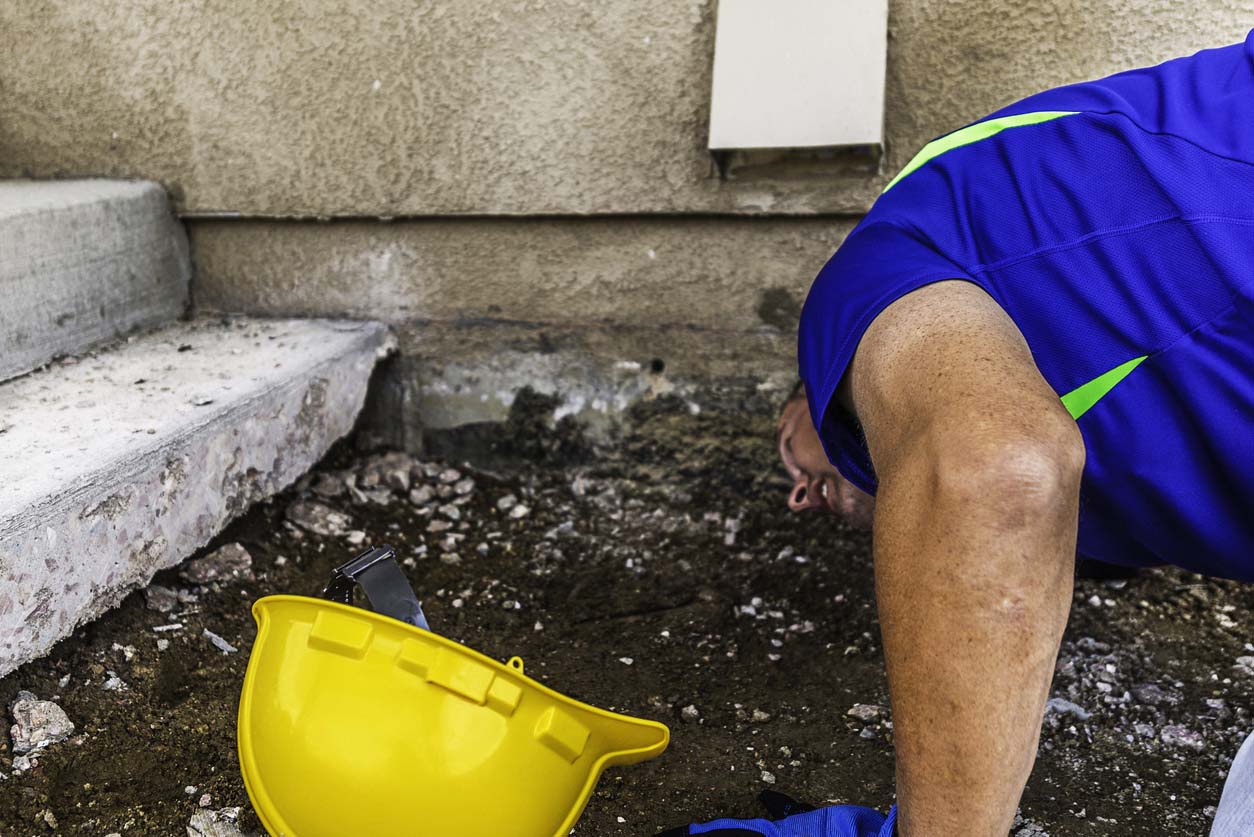
Earthquake Retrofit Cost by Type of Technique
The type of retrofit techniques that are used to enhance the stability and earthquake resistance of the home can affect the overall cost of the project. Common earthquake retrofit techniques include anchoring the home to a mudsill, bolting or anchoring the cripple walls, bracing the cripple walls, bolting the home to the foundation, and reinforcing the shear wall.
| Retrofitting Technique | Average Cost (Resources and Labor) |
| Anchoring to a mudsill | $1,000 to $3,000 |
| Cripple wall bolting | $1,000 to $3,000 |
| Cripple wall bracing | $1,000 to $2,500 |
| Foundation bolting | $500 to $3,000 |
| Shear wall reinforcement | $3,000 to $6,000 |
Anchoring to a Mudsill
The mudsill refers to the first layer of wood that is installed on the top of the foundation wall. It is the anchor point for the home’s framing, so the home needs to be securely attached to the mudsill to help prevent the structure from sliding. This is achieved by anchoring the cripple wall to the mudsill.
Professional earthquake retrofitters will drive bolts through the mudsill and into the cripple wall to serve as additional anchor points. The bolts will prevent the framework for the home from pulling away from the mudsill. This retrofit technique is one of the more affordable options, ranging from about $1,000 to $3,000.
Cripple Wall Bolting
Bolting the cripple wall is similar to anchoring the home to the mudsill in that the earthquake retrofit professional will bolt or anchor the cripple walls by driving bolts into the structure. However, cripple wall bolts are not driven through the mudsill for this retrofit project. Instead, the cripple wall is anchored to the floor above in order to prevent the walls from shifting, bending, folding, or collapsing during an earthquake.
Cripple walls are the short stud walls that exist between the foundation and floor in some homes. Not all homes have cripple walls, so this upgrade may not be available, depending on the type of home. If the home does have cripple walls, a homeowner can plan to spend about $1,000 to $3,000 for this project.
Cripple Wall Bracing
The cost to install cripple wall bracing is about the same as the cost to put in cripple wall bolting, so homeowners will want to make room in the budget for about $1,000 to $2,500 if they are interested in this retrofit technique. Cripple wall bracing involves using plywood to reinforce and brace the cripple walls throughout the home.
Some homes do not have cripple walls, so this isn’t an option for earthquake retrofitting, while other homes may not require cripple wall bracing. Generally, cripple wall bracing is used to reinforce the walls in older homes that cannot handle the movement during an earthquake. Bracing the walls helps to minimize movement and preserve the stability of the structure.
Foundation Bolting
A severe problem that can occur during an earthquake is that the top structure of the home may slide off the foundation of the building. When the structure is not properly supported by the foundation, it can bend, break, or collapse entirely, depending on how the weight is distributed on the surface the home is sitting on.
In order to stop the home from sliding off the foundation during an earthquake, homeowners can opt for a foundation bolting retrofit project. This type of retrofit project costs about $500 to $3,000 and involves driving bolts into the foundation of the building to anchor the framework to the foundation.
Shear Wall Reinforcement
One of the more expensive retrofitting techniques is shear wall reinforcement. This option costs between $3,000 and $6,000, depending on the size and complexity of the job. A shear wall provides structural support to resist lateral forces caused by heavy winds or earthquakes. This part of the home is essential for ensuring that the building does not sway or collapse.
Shear wall reinforcement is used to increase the strength and resistance of the shear walls throughout the home, further increasing the stability of the building. This retrofitting technique can be done on the upper story’s vertical and horizontal surfaces using steel grates or additional stud reinforcements.
Do I need earthquake retrofitting?
There are a few simple factors to consider when homeowners are trying to determine if the property needs earthquake retrofitting, including the frequency of earthquake activity, the proximity of the home to active fault lines, and the age of the home. Generally, if the homeowner pays for an annual policy from one of the best earthquake insurance companies, then it’s a good idea to invest in earthquake retrofitting. Homeowners can consider these factors when deciding if they need an earthquake retrofit.
Frequency of Earthquake Activity
The first thing to think about when homeowners are considering earthquake retrofitting is the frequency of earthquakes in the area. There are several states that have a high occurrence of earthquakes, including California, Oregon, and Washington. The insurance companies in these states also typically offer earthquake insurance, which is a clear sign that the home is at risk of earthquake damage.
If the home is located in an area that experiences frequent earthquake activity, then it’s a good idea to retrofit the home to help ensure that the structure is safe during an earthquake. Otherwise, an earthquake could cause the home to shift, slide off the foundation, or even collapse.
Proximity to Active Fault Lines
Earthquakes generally occur when the tectonic plates in the area shift, causing the ground to move. Fault lines are the lines between these tectonic plates. The closer the home is to an active fault line, the higher the risk of an earthquake occurring in the area. This means that if the home is located within close proximity to an active fault line, then earthquake retrofitting is highly recommended.
Many people may not know whether their home is located close to an active fault line or not, so it’s a good idea to check the nearest fault with the USGS. Similarly, California residents can use the map provided by the Bay Area Earthquake Alliance to determine how close they are to an active fault line.
Home Age
The age of the home can indicate whether the house should be earthquake retrofitted or not. Homes that were built before the 1980s do not have built-in earthquake-resistant features, so those individuals with an older home will want to invest in earthquake retrofitting to help protect the structure from earthquake damage.
Even if the home was built after 1980, it’s still a good idea for the homeowner living in an earthquake-prone area to have a seismic review conducted to determine whether earthquake retrofitting is necessary for the house. While earthquake retrofitting typically costs $3,369 to $8,608, it does not cost as much as repairs to an unprotected structure that experiences damage from a powerful earthquake.
Earthquake Retrofitting: DIY vs. Hiring a Professional
There are a wide range of jobs that are well suited to experienced and skilled DIYers, but earthquake retrofitting is not one of them. The purpose of an earthquake retrofit project is to help stabilize the structure and provide additional support to prevent the building from shifting, sliding, or collapsing during an earthquake.
Handing this job to a DIYer is a bad idea because they usually do not have enough experience to ensure that the work is completed correctly. Beyond this simple fact, many states will not approve of an earthquake retrofit project if it isn’t completed by a certified installer. While the homeowner could save up to 70 percent of the overall cost by taking on the work themselves, this decision may put the homeowner and residents at risk during an earthquake. It’s best not to cut corners on such an important job and instead hire a crew of professionals to ensure the earthquake retrofit is completed properly.
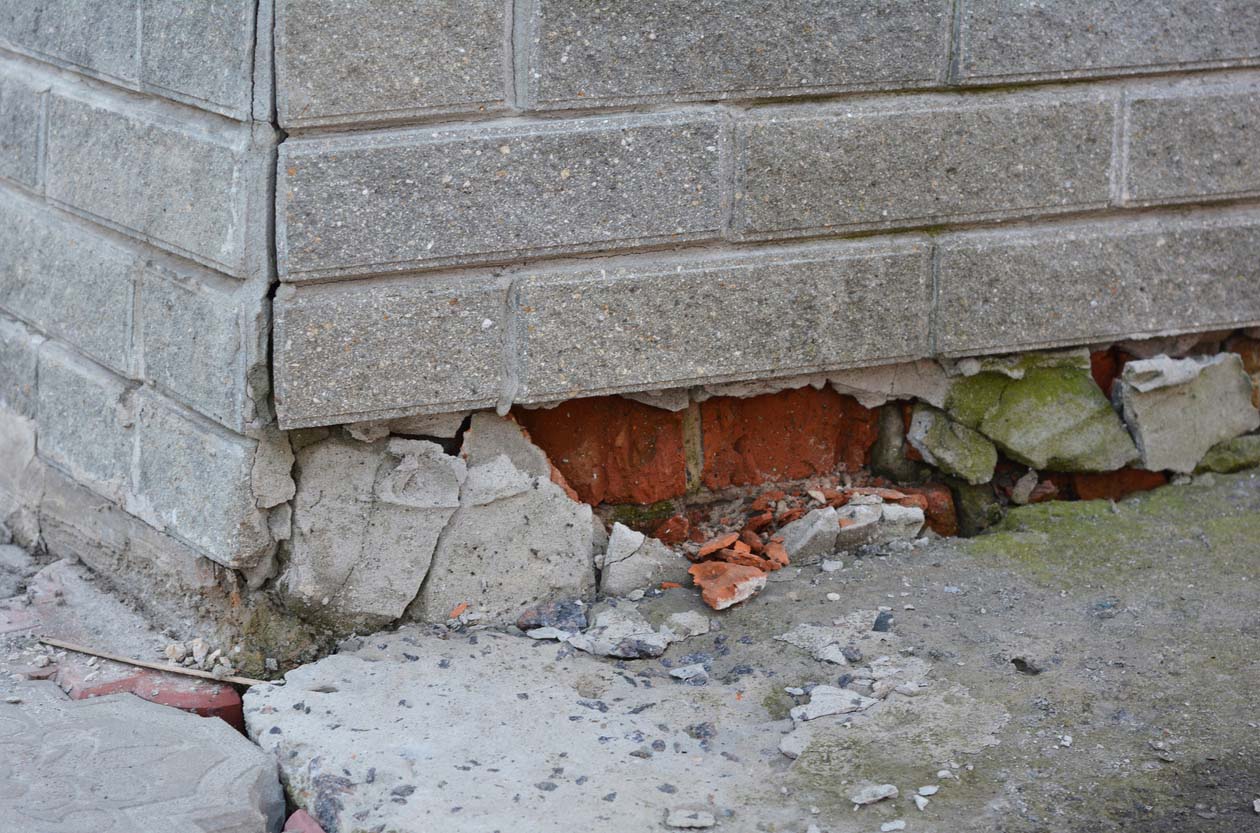
How to Save Money on Earthquake Retrofit Cost
Earthquake retrofitting helps to protect and preserve the stability and support of the structure in the case of an earthquake, so it’s necessary to have the work completed by trained and certified professionals. However, even if the homeowner cannot save money by DIYing the work, there are other ways to save on the initial cost of the project and to see cost savings through rebate programs, tax write-offs, and insurance premium discounts. Consider the following methods for saving money on earthquake retrofit costs.
- Ask about insurance premium discounts. The average cost of earthquake insurance ranges from $800 to $5,000 per year, but some insurance companies will offer an insurance premium discount for earthquake retrofitting.
- Select affordable materials. Earthquake retrofitting can be completed without using the most expensive materials, so to save on the project costs, discuss using more affordable materials with the installer.
- Research multiple earthquake retrofit companies. Companies compete for customer attention. One of the ways to do this is by offering pricing that’s different from competitors’ pricing. Homeowners can take advantage of this strategy by researching and getting quotes from at least three different companies in the area.
- Look into potential tax benefits. Some cities and states will offer rebates for completing an earthquake retrofit project, while others may allow the homeowner to write off a portion of the investment through their taxes.
Questions to Ask About Earthquake Retrofitting
When hiring an individual, crew, or full company to work on the home, the homeowner has the right and the responsibility to ask any questions they may have before, during, and after the project is completed. Contractors and earthquake retrofit professionals are used to answering questions, so homeowners will want to ask any pressing questions they may have about the installation process, materials, licensing, certification, cost estimates, payments, timelines, and more. The examples below provide a good starting point.
- How long have you been doing earthquake retrofits?
- Are you licensed, bonded, and insured?
- Will there be any other workers on-site?
- If so, are they licensed, bonded, and insured?
- How long has the company been in business?
- Do you have references available?
- What type of homes do you work on?
- Who will handle the permit acquisition process?
- Can I get a written estimate?
- Do you charge a fee for the initial assessment?
- Will you include a breakdown of the costs?
- Is there a certified professional engineer on staff?
- What type of retrofit techniques do you suggest?
- How long will the job take?
- Do you offer any guarantees or warranties?
- How will payment work?
- Will you clean up after the job is completed?
FAQs
Earthquake preparedness is essential for surviving in emergency situations, so it’s a good idea for homeowners to consider retrofitting the home as a preventative measure to help avoid damage during an earthquake.
Q. Is earthquake retrofitting worth it?
Whether earthquake retrofitting is worth it or not depends on the location of the home. If the home is located in a region that is close to active fault lines or subjected to frequent earthquakes, then retrofitting the building to better resist earthquake damage is a good idea. Given that it costs only about $5,988 on average to retrofit the home, it’s worth the investment to prevent earthquake damage that could cost significantly more time and money to repair.
Q. How much does earthquake destruction cost?
Depending on the frequency and severity of seismic activity throughout the year, the annual cost of earthquake damage worldwide falls between $100 million and $100 billion, while the United States estimates an average expense of about $14.7 billion per year. Earthquake insurance covers much of the cost of damages, though some providers may not cover homes that have not been retrofitted.
Q. How long does an earthquake retrofit take?
The exact duration of an earthquake retrofit project varies depending on the type of retrofit technique, the size of the home, and the complexity of the structure. While some jobs may take less than a week, more complicated homes may take two weeks or more.
Sources: Angi, HomeAdvisor, Fixr, Iowa State University, U.S. Geological Survey

